Mazda CX-5 Vs Subaru Forester: Which One Is Right For You?
Who wins the compact crossover battle?
The compact crossover has slowly become one of the most popular segments in North America, replacing small sedans and hatchbacks in many driveways. The popularity is driven by the fact that these crossovers offer more functionality than small cars without a huge compromise in fuel economy or purchase price. As a result, the segment continues to grow as more and more consumers get into a compact crossover.
The success of the segment has led to a huge field of popular compact crossovers, making it hard for some consumers to figure out which is best for them. For example, if you are considering a Mazda CX-5 and a Subaru Forester, they are both great vehicles that offer loads of standard and optional features. However, the CX-5 has a list of advantages over the Forester and below, we take a look at what makes the Mazda better than the Subaru.
Power Train & Driving Feel
The Mazda CX-5 is powered by a naturally aspirated Skyactiv-G 2.5-litre four-cylinder engine that offers 187 horsepower and 186 lb-ft of torque. The Subaru Forester features a naturally aspirated 2.5-litre four-cylinder of its own, but with 182 horsepower and 176 lb-ft of torque, it offers less standard horsepower and torque than the CX-5. That added power makes the Mazda quicker and more responsive in every driving situation. That power advantage also leads to a significant towing advantage for the Mazda with 907kg, while the Forester tops out at 680kg.
Get a Quote on a New Mazda CX-5 or Subaru ForesterThe Subaru Forester is only available with one engine, but the CX-5 is also offered with the Skyactiv-G 2.5 T engine. This four-cylinder powerplant features the Dynamic Pressure Turbo system, leading to up to 250 horsepower and up to 320 lb-ft of torque when using premium fuel. This turbocharged engine makes the CX-5 substantially more powerful than the Subaru, making this the ideal option for anyone who wants a more engaging driving experience from their compact SUV.
The Subaru Forester and Mazda CX-5 both offer a manual shift mode with the control of steering wheel-mounted shift paddles, but these vehicles feature two very different transmissions. The CX-5 comes with a traditional six-speed automatic transmission, which can be shifted manually via the shift handle on the centre console or the steering wheel paddles. While the Subaru has shift paddles, it has a Continuously Variable Transmission, or CVT. The CVT doesn’t have traditional gears, instead using a set of drums that are constantly changing size to keep the engine in the ideal range. Some people don’t care for the way that a CVT works, so Subaru has a manual mode that creates shifts, making it feel more like a traditional automatic transmission. However, for those who don’t care for the function of the CVT, the CX-5 has a big advantage.
These two vehicles are similarly sized, but the Forester is a bit taller and longer while the CX-5 has a longer wheelbase and is wider overall. Less overall height makes the Mazda easier to fit in garages while the shorter length makes for easier parallel parking. The longer wheelbase leads to more interior space, but on the road, having the axles further apart helps create a smoother ride.
Finally, the Mazda CX-5 is ultra-quiet, even at highway speeds, thanks to the use of noise-isolating glass in the windshield and side windows.
Technology and Features
The Mazda CX-5 and the Subaru Forester both feature an eight-inch colour infotainment display, but this system is standard on all CX-5 models whereas it is not standard on lower-priced Subaru models. In the Mazda, that infotainment system can be mated with a 10-speaker Bose system while the premium Subaru system is a nine-speaker setup from Harman Kardon. Both systems offer great sound quality, but the Bose system with the extra speaker boasts more potential output with the legendary Bose brand name.
Where the Mazda infotainment system really outshines the competitors is in the inclusion of the HMI Commander system. This system features a large knob and several smaller buttons that are clustered together between the centre arm rest and the shifter. When the driver’s elbow is on the centre arm rest, their hand is very near the HMI Commander, allowing them to change the menu on the screen, change the radio station, adjust volume or access one of the other programs, such as the turn-by-turn navigation. This system makes accessing the infotainment system a breeze while also adding an upscale feel.
Another feature which allows the CX-5 to stand out from the crowd is the Windshield-Projected Active Driving Display, more commonly known as a heads-up display. This system projects a collection of key information onto the windshield, right in the driver’s line of sight. This allows the driver to keep their eyes on the road while still being able to monitor things like vehicle speed, the local speed limit, navigation commands and features of the i-Activsense driver assistance technology suite.
Finally, the Mazda CX-5 features rain-sensing wipers which speed up or slow down when the strength of the storm changes. This saves the driver the work of changing intermittent speeds on their own, making it a bit easier to drive in harsh conditions. Also, while remote keyless entry and push-to-start are both available on the Forester, those features are standard on all new CX-5 models.
Safety
The Mazda CX-5 and Subaru Forester both come with a long list of standard safety features. This includes technology like Blind Spot Monitoring, Rear Cross Path Detection, Radar Cruise Control, Lane Keep Assist and automatic braking, all of which are included in Mazda’s i-Activsense advanced driver assistance technology suite. Where the CX-5 stands apart from the Forester is in the offering of the Driver Attention Alert and the 360-degree View Monitor system with front and rear parking sensors.
SEE ALSO: Mazda CX-5 vs Nissan RogueThe Driver Attention Alert system engages when the CX-5 has been driven at highway speeds for more than 20 minutes. When active, the system monitors the driver’s steering and throttle inputs, as well as the vehicle’s position on the road relative to the lane lines. When the system detects signs of fatigue, such as odd steering or throttle inputs, it notifies the driver to stop and take a break. The system makes the same recommendation when the driver has been at the wheels for more than two-straight hours, making the roads safer for everyone.
The 360-degree View Monitor system provides a look at everything that is going on around the vehicle, allowing the CX-5 driver to be sure that the coast is clear before driving away. In case the driver gets too close to an object while parking, front and rear sensors prevent an impact in tight quarters.
Interior and Cargo Space
The Forester and CX-5 are both available with a moonroof and when equipped, the Mazda has an advantage in rear headroom. This makes for a more comfortable ride for taller passengers, but the extra ceiling space under the glass roof makes for a larger space when getting in and out of the rear seat. Thanks to the advantage in wheelbase, the CX-5 has more rear legroom, giving passengers space to stretch their legs on long rides.
Also, while both vehicles have spacious cargo areas and the ability to expand that area with folding rear seats, the two use different rear seat designs. The Forester has a two-piece 60/40 rear seat while the CX-5 has a three piece 40/20/40 rear seat. The three-piece seat design allows for more configurations, leading to a better mix of seating and cargo space for every situation. When it comes it interior design, the CX-5 offers a noticeably higher level of craftsmanship in its Signature trim level featuring Nappa leather and genuine Abachi wood trim.
Styling
The CX-5 and Forester feature two very different design directions. The Subaru has an angular front end with contrasting colours and large vents flanking a pair of central grilles. Along the sides, the Forester has large wheel opening arches that give the vehicle a more muscular feel. The CX-5 features the Kodo design language, which focuses on simplicity. Up front, the large grille is flanked by the slim LED headlights and while there is a slim lower grille, the front is very clean.
The Forester takes a more angular and athletic design stance. The lines of CX-5’s front fascia flow up into the hood and out along the sides, creating a smooth front-to-rear flow on every surface. The wheel arches are slimmer, contributing to the streamlined styling of the sleek Mazda lines.
Pricing
The Subaru Forester is only offered with standard all-wheel-drive, while the Mazda CX-5 is available with front-wheel-drive. If you live somewhere that doesn’t get any winter weather and you never deal with rough roads, you can go with the front-drive CX-5, which costs less than the base Forester.
Verdict: Mazda CX-5 vs Subaru Forester
If you are looking for a compact crossover with more power and fun-to-drive factor, the Mazda CX-5 is the easy choice. It offers more power than the Subaru with the standard engine while the turbocharged power plant offers gobs more power than the Forester. Also, in addition to the power advantage, the Mazda automatic transmission offers a more engaging driving experience than the Subaru CVT. Also, if you don’t need all-wheel-drive, only the CX-5 comes with front-wheel-drive.
If you aren’t as concerned with power as you are functionality, the CX-5 still beats the Forester in interior technology, advanced safety features and key passenger space metrics. You might pay a little more for the Mazda, but you are getting far more for your money.
Patrick Rall has been covering the automotive industry for over a decade, but was born into car culture. Having grown up in his father's performance shop, he spent extensive time at the track, driving and wrenching on various types of vehicles.
More by Patrick Rall



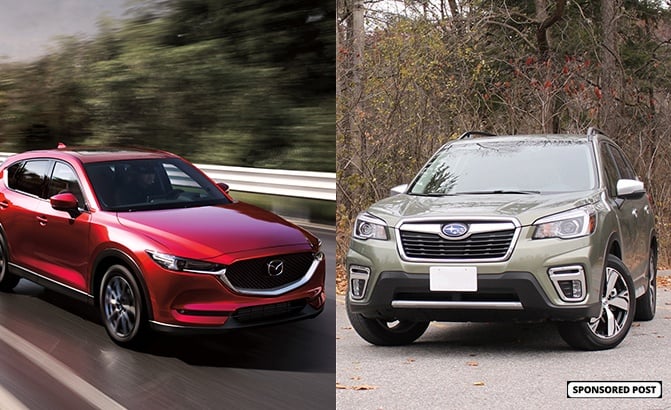
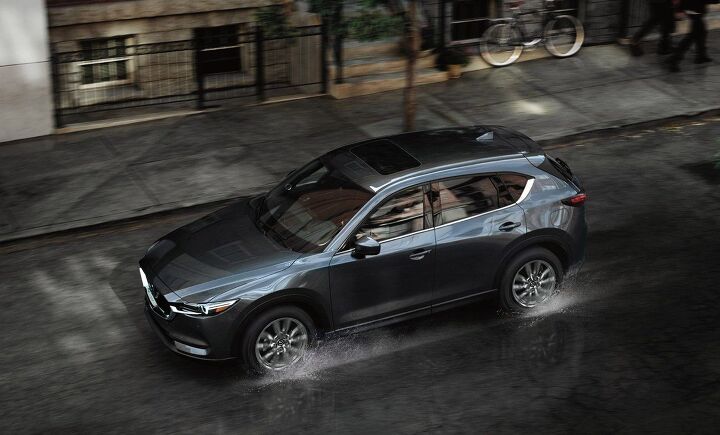

























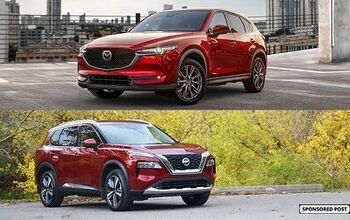
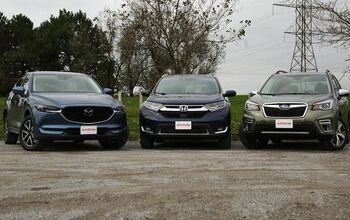

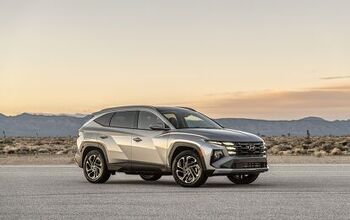


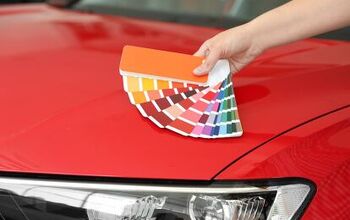




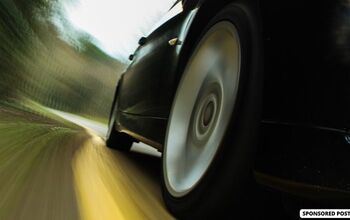
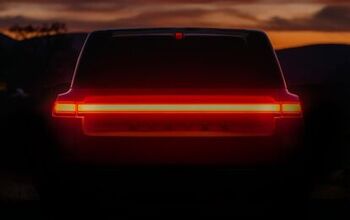
Comments
Join the conversation
Totally biased comparrison.
The forester has much better visibility, two more inches of front legroom,much more headriom and rear legroom. Offers huge panaramic sunroof.
The two best all wheel drive systems are subaru and audi quattrow. The invented aroynd the same time. The subaru boxer engine sits lower to ground
For better center of gravity.
I had cx 5 and returned ti mazda in 4 days for bad front legroom. They had used forester on lot. And i bought. The mazda us small and cramped comparred to forester.
My wife jest bought cx 5 and wants ti return. I like mazda,great cars but si are subarus.